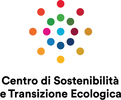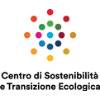Connecting existing cemeteries saving good soils (for livings)
Urban sprawl consumes and degrades productive soils worldwide. Fast and safe decomposition of corpses requires high-quality functional soils, and land use which competes with both agriculture and buildings. On one hand, cremation does not require much land, but it has a high energy footprint, produces atmospheric pollution, and is unacceptable to some religious communities. On the other hand, as exhumations are not practiced, “green burials” require more surface area than current burial practices, so a new paradigm for managing land use is required. In this paper, we propose a concept for ‘green belt communalities’ (i.e., ecological corridors with multiple, yet flexible, uses and services for future generations). With the expansion of urban centers, ecological corridors gradually disappear. Cemeteries for burial plots preclude alternative uses of the land for a long time. By combining these two aspects (need for connectivity and land take imposed by cemeteries), two positive results can be achieved: protecting memories of the past and connecting ecosystems with multiple-use corridors. This new paradigm works best in flat or hilly terrain where there are already several urban agglomerations that contain traditional cemeteries. Stakeholders who might consider this concept are local administrators, planners, and the communities of individuals who share specific beliefs on burial systems.





























